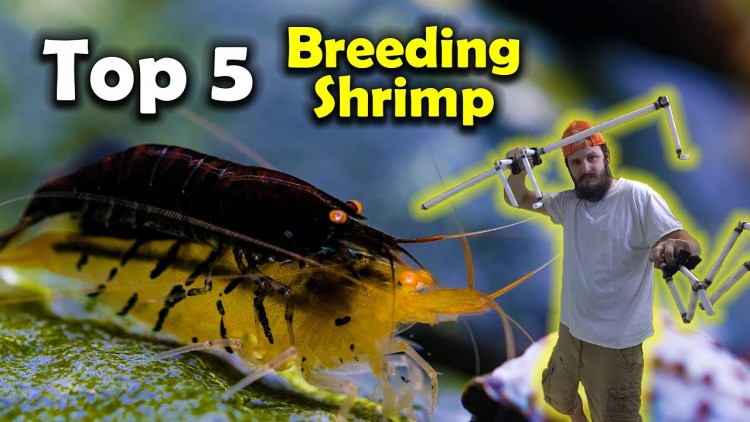LRB Aquatics Top 5 Tips for keeping and Breeding Shrimp
- Aug 14, 2019
- Web Aggrigator
- 2549 0 0

Five (5) tips to breeding and keeping freshwater shrimp in the home aquarium! These tips are from one of the top shrimp breeders on YouTube, Lucas Bretz with L.R. Bretz's Aquatics. Lucas shares his knowledge on shrimp and the five (5) tips he has to breed shrimp successfully.
Everyone has their own special was of doing things the only difference is the Lucas (aka Shrimp Jesus) also is the 2017 winner of the International Shrimp Contest in Red Neocaridina.
5 - The Right Shrimp for the Water
If you have softer water, you want to get cardinal shrimp. If you have harder water, you want to go for neocaridina shrimp. Some people only test TDS which is OK for neocaridina shrimp but Cardinal shrimp really dislike the kH, so it's suggested that you check your water hardness.
No mater which way you go, test your water before buy your shrimp and buy shrimp that fit your water parameters to make your life easier. There are many test kits you can get a general test kit from API for a few bucks (see the current price) or get a simple dip stick testers that tell you what range for multiple parameters which will work just fine (see the current price).
4 - Keep a Natural Environment
You want to keep them in a natural environment for the shrimp so keep plants in the tank. They like hiding places to feel safe and to make nurseries. You can keep a wide variety of things in the tank to create a natural environment. Here are some examples and you can keep one or more of the following in the tank. Moss, Other Types of Plants, Malaysian or other types of Driftwood, and rocks.
Rock, Plants, and Driftwood are the ideal setup. Malaysian Driftwood is preferred because it is softer, and it is easier for the shrimp to pick at it. The plants will promote algae growth and microflora that they can eat off of.
Make sure to choose a plant that when you are doing water changes will stir everything up and cause a mess.
3 - Let Your Shrimp Be
When you first get your shrimp do not touch them, to allow them to get conformable with their space. If you start to mess with them, they will most likely be going to be slow to breed. So set and forget them for a month, and they should start to reproduce for you. Make sure that before you set and forget them, they have a nursery in the tank to allow them a place to breed safely. The nursery can be something simple as a pile of rocks or moss.
If you start to notice problems or shrimp dieing, you want to intervene and determine the problem is and solve it to prevent the death of any more shrimp. Consistency is key.
2 - Feeding
Most people think that he shrimp will just grass off of the algae and that you do not have to feed them often. If you want to be successful and if you want a chance to be able to breed them, then you want to feed them consistently at least once a day. Some people do not feed during the weekends, and some people like Lucas feed twice a day as long as you are keeping up with the water maintenance to maintain proper water conditions.
Using brightly colored food makes it easy for you to see in the tank if the shrimp are leaving any behind. If so, then that is a sign that you should reduce the amount that you are feeding. Uneaten food should be removed, food left behind could start to grow fungus, and when the shrimp eat, it could lead to bacterial infections and other problems.
Keeping Malaysian Driftwood, moss and plants are handy, they provide some aquascaping aesthetics, but also serve a purpose allowing the shrimp can also pick at it and eat it slowly.
Feeding less food every day is better than feeding less frequently. Lucas feeds Tetra Color Tropical Food Flakes.
1 - Get Healthy Shrimp
These are shrimp that you do not have to fear that already have a disease. Get them directly from the breeder and if you buy them, make sure they were quarantined or make sure that you quarantine them before introducing them to your tank. Bacterial infections are common with shrimp. Shrimp imported have a high likelihood to have bacterial infections. Starting with healthy shrimp will make everything easier.






About author
The content found on this page was found and added by Tank Facts to make it easier to learn about new species and keeping all of the found content in one place. The brand and content is owned by the respected individuals and in no way considered Tank Fact